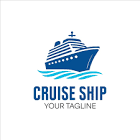$DIS $CCL $RCL
#Disney #Cruise #AsiaTravel #TravelIndustry #StockMarket #LuxuryTravel #ConsumerSpending #DisneyStock #Tourism #FamilyEntertainment #Frozen #MarketAnalysis
Bookings for Disney’s first cruise in Asia are set to open soon, offering a fresh experience in the cruise industry. The Disney Adventure, the company’s newest luxury cruise, promises a blend of entertainment and travel, starting at $958 for two people. However, for guests looking for more than just a basic cabin, prices escalate, with upgrades available like ocean-view rooms, exclusive verandahs, and “Frozen” themed suites. This pricing layout reflects Disney’s strategy of tiered value offerings tied to consumer expectations for both luxury and unique entertainment experiences.
From a financial perspective, Disney’s move into the Asian cruise market is significant. As Asia has emerged as one of the most promising regions for global tourism, particularly within the middle and upper-middle-class sectors, Disney is tapping into this by strategically broadening its portfolio. The cruise market in Asia is expected to grow as middle-income consumers seek more nuanced, themed vacation experiences, adding to consumer demand for family-oriented travel. This follows Disney’s playbook of expanding its theme parks in Asia over the years. $DIS stock could see increased volatility or a strong uptick with the launch, particularly if early bookings outpace expectations, signaling strong demand in this new geographic market.
The launch also bears relevance to competitors in the cruise sector such as Carnival Corporation ($CCL) and Royal Caribbean Cruises ($RCL), as the introduction of a family-centered themed cruise could strengthen the competitive dynamics. Historically, the cruise industry commands high fixed costs, and pricing power depends on strong brand appeal, creating potential shifts in market share. Disney’s unique positioning with a direct link to one of the strongest entertainment brands globally sets it apart from other players, which could accelerate demand even in an economic period of moderated consumer discretionary spending.
In a wider market context, the expansion of the cruise industry into Asia signals the potential for the broader travel and tourism market to recover as border restrictions ease post-pandemic. Additionally, the company’s move could positively impact Disney’s overall financial performance, boosting revenue growth streams outside its traditional movie production and theme park revenue. Investors will be watching closely to gauge consumer appetite for both high-end travel and entertainment, as this move could have a ripple effect on not only Disney’s stock but also the wider travel and leisure sectors.







Comments are closed.